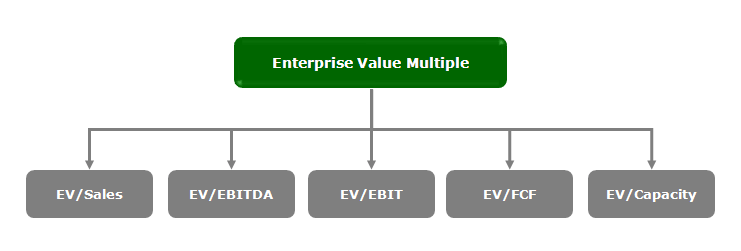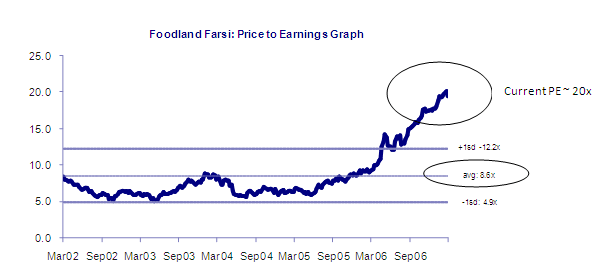Difference Between Equity and Enterprise Value
The equity value of the company is of two types: market equity value
which is the total number of shares multiplied by market share price and the
book equity which is the value of assets minus liabilities; whereas, enterprise
value is the total
value of equity plus debt minus the total amount of cash the company has– this
roughly gives an idea about the total obligation a company has.
This is one of the most common valuation topics that cause confusion in Equity Research and Investment Banking. In most basic terms, Equity Value is the value only to the shareholders, however, Enterprise value is the value of the firm that accrues to both the shareholders and the debt holders (combined).
What is Equity Value?
Equity value is simply the value of a firm’s equity i.e. the market capitalization of the firm. It can be calculated by multiplying the market value per share by the total number of shares outstanding.
For example, let’s assume Company A has the following characteristics:
Based on the formula above, you can calculate Company A’s equity value as follows:
- = $1,000,000 x 50
- = $50,000,000
However, in most cases, this is not an accurate reflection of a company’s true value.
What is Enterprise Value?
Enterprise value considers much more than just the value of a company’s outstanding equity. It tells you how much a business is worth. Enterprise value is the theoretical price an acquirer might pay for another firm, and is useful in comparing firms with different capital structures since the value of a firm is unaffected by its choice of capital structure. To buy a company outright, an acquirer would have to assume the acquired company’s debt, though it would also receive all of the acquired company’s cash. Acquiring the debt increases the cost to buy the company, but acquiring the cash reduces the cost of acquiring the company.
- Enterprise Value = Market value of operating assets
- Equity Value = Market value of shareholders’ equity

Net Debt – Net debt is equal to total debt less cash and cash equivalents.
- When calculating total debt, be sure you include both the long-term debt and the current portion of long-term debt, or short-term debt. Any in-the-money (ITM) convertible debt is treated as if converted to equity and is not considered debt.
- When calculating cash and equivalents, you should include such balance sheet items as Available for Sale Securities and Marketable Securities,
- The market value of debt should be used in the calculation of enterprise value. However, in practice, you can usually use the book value of the debt.
Equity Value vs Enterprise Value
What is Equity Value Multiple?
The equity value multiples have both the numerator and the denominator as the “Equity” measure. Some of the multiples of Equity value multiples are as per below.
Numerator – Equity Value is Price per share that shareholders are expected to pay for a single share of the company under consideration
Denominator – Operating parameters like EPS, CFS, BV, etc equity measures. For example EPS – Earnings per share and it reflects the profit per share that accrues to the shareholders.
- PE Multiple – This ‘headline’ ratio is, in essence, a payback calculation: it states how many years’ earnings it will take for the investor to recover the price paid for the shares. Other things being equal when comparing the price of two stocks in the same sector the investor should prefer the one with the lowest PE.
- PCF Multiple – It is a measure of the market’s expectations of a firm’s future financial health. This measure deals with cash flow, the effects of depreciation and other non-cash factors are removed.
- P/BV Multiple – Useful measure where tangible assets are the source of value generation. Because of its close linkage to return on equity (price to book is PE multiplied by ROE), it is useful to view price to book value together with ROE
- P/S Multiple – Price/sales can be useful when a company is loss-making or its margins are uncharacteristically low (distressed firms)
- PEG Multiple – PEG ratio used to determine stock’s value while taking into account earnings growth. The enterprise value multiples have both the numerator and the denominator as “Pre Debt” and “Pre-Equity” measure. Some of the multiples of Enterprise value multiples are as per below.
What is Enterprise Value or EV Multiples?
Numerator – Enterprise value is primarily a pre-debt and pre-equity measure as EV reflects values both to the Debtors as well as Shareholders’.
Denominator – Operating parameters like Sales, EBITDA, EBIT, FCF, Capacity are pre-debt and pre-equity measures. For example EBITDA – Earnings “before” Interest tax depreciation and amortization; this implies that EBITDA is measure before the debtors and shareholders are paid off and likewise.
- EV/EBITDA Multiple – Measure that indicates the value of the overall company, not just equity. EV to EBITDA, is a measure of the cost of a stock which is more frequently valid for comparisons across companies than the price to earnings ratio. Like the P/E ratio, the EV / EBITDA ratio is a measure of how expensive a stock is.
- EV/Sales Multiple – EV/sales is a crude measure, but least susceptible to accounting differences. It is equivalent to its equity counterpart, price to sales, where company has no debt
- EV/EBIT Multiple – EBIT is a better measure of ‘free’ (post-maintenance capital spending) cash flow than EBITDA and is more comparable where capital intensities differ.
- EV/FCF Multiple – EV/FCF is preferable to EV/EBITDA for comparing companies within a sector. Comparing across sectors or markets where companies have widely varying degrees of capital intensity
- EV/Capacity – Core EV/units of capacity (such as tonnes of cement capacity) or another revenue-generating unit (such as subscribers).
Equity vs Enterprise Value Comparative Table
| Equity Value | Enterprise Value (EV) | |
| Express the value of shareholders’ claims on the assets and cash flows of the business | Cost of buying the right to the whole of an enterprise’s core cash flow | |
| Reflects residual earnings after the payment to creditors, minority shareholders & other non-equity claimants | Includes all forms of capital – equity, debt, preferred stock, minority interest | |
| Advantages of Equity Value
• More relevant to equity valuations
• More reliable • More familiar to investors | Advantages of Enterprise Value
•Accounting policy differences can be minimized
• Avoid the influence of capital structure • Comprehensive • Enables to exclude non-core assets • Easier to apply to cash flow |
Overvalued or Undervalued?
There are primarily two ways in which the fair valuation of the company can be arrived at using the relative valuation technique. They are historical multiple methods and sector multiple methods.
#1 – Historical Multiple Method
The common approach is to compare the current multiple to a historical multiple measured at a comparable point in the business cycle and macroeconomic environment.
The interpretations are relatively simpler if we create the Price to Earnings Graph. As noted above, the Foodland Farsi current PE ~ 20x, however, the historical average PE was closer to 8.6x.
Currently, the market is commanding $20/EPS (defined as PE); however, in the past, this stock was trading at $8.6/EPS. This implies that the stock is overvalued with PE = 20x when compared with historical PE = 8.6x and we may recommend SELL position on this stock.
#2 – Sector Multiple Method
In this approach, we compare current multiples to those of other companies, a sector or a market. Below is a hypothetical example to explain this methodology.
From the table above, the average PE multiple for the IT sector is 20.7x. However, the company under consideration – Infosys is trading at 17.0x. This implies that Infosys is trading below the average sector multiple and a BUY signal is warranted.
Conclusion
As we note from the above article that both tools are important from the point of view of Valuations. Equity Value is the value only to the shareholders, however, Enterprise value is the value of the firm that accrues to both the shareholders and the debt holders (combined).
In each company/sector, however, there are 3-5 multiples (Enterprise value or Equity value or both) that can be applied. It is more important for you to know the usage and application of each multiple.







No comments:
Post a Comment